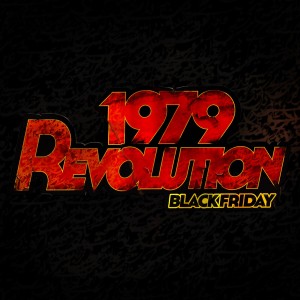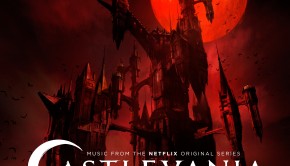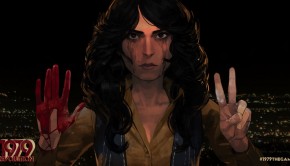1979 Revolution: Black Friday Original Video Game Soundtrack
 |
Album Title: 1979 Revolution: Black Friday Original Video Game Soundtrack |
| Record Label: Lakeshore Records |
|
| Catalog No.: N/A |
|
| Release Date: May 13, 2016 |
|
| Purchase: Buy at iTunes |
Overview
Nima Fakhrara’s score to 1979 Revolution: Black Friday was released on iTunes along with the game’s release on Windows and OS X. The game, which generated enough controversy to be banned from Iran, is about the revolution that took place during that year in Iran, and the moral ambiguity that surrounded many of the events that took place. Fakhrara’s score to 1979 Revolution brings in authentic Persian instrumentation and mixing from that time period to give the music of the game a genuine feel.
Body
The score opens with “1979,” a gritty track with sparse guitar riffs. The melody is swung and deceptively gentle – in another setting, it might sound calm, but given the tense background effects and metallic sound of the electric guitar, it’s filled with energy. In several ways, this track sets the tone of the entire soundtrack: very raw, and packed with tension.
“Dirt” opens quietly with a soft, dark motif on a muted guitar backed by synth strings. Halfway through, it flips into a driving track pushed forward by drums and accompanied by something that’s half-note, half-sound along the way. A similar melody returns in “Move with It,” this time slightly louder and accompanied by more distinct harmonies and rhythms that give the piece more of a shape.
Some of the tracks use more synth than others; “Dreams” utilizes pure synth sounds for a brief, otherwordly motif that returns in a few other tracks for a more elongated version, such as “Time has Passed.” The latter track takes the few note motif, introduces it, and then builds it up with layers upon layers, drastically increasing the intensity of the track. “Tehran,” after a brief percussion-filled opening, is a deceptively soft piece with a static-filled pulse anchoring the music as various accompanying sounds are added.
One of the best aspects of the soundtrack is its authenticity; the electronic sounds, like the guitar and mixing, sound straight out of the time period of the game. The various instruments and instrument tracks are straight out of Iran, as well. The soundtrack not only represents the tone of the game very well, but it accurately mimics the sounds of the setting, both temporally and geographically. “Friday Kisses” is a great example, incorporating an alto vocal line faintly echoing the melody – a softer version of the main theme introduced in “1979.”
For the most part, each track is over relatively quickly, without much of a development before it ends; the tracks are more like brief glimpses into musical setups than full-length pieces. A few tracks stand out in length, however; “Speech” is the longest piece on the album, clocking in at over six minutes in length. While the piece does tend to take advantage of its length for long stretches of ostinato-like motifs that could perhaps be shortened, I enjoyed the more relaxed pace of tracks like this. Overall, the piece has that quiet-but-tense trademark sound of the album, but I enjoyed the rises and falls that came from the more relaxed pace of the track. “Hafez” is even more subdued, but follows a similar rise-and-fall structure of “Speech,” sometimes with pointed percussion and melodies, and sometimes with long stretches of dissonance.
Progression is not strictly limited to the longest tracks on the album. “Hand in Hand” opens ominously with one drawn-out note; soon a layer of strings are added, which crescendo until they are broken by a drumbeat that begins a slow, stately rhythm. The strings return and add a soft melody, and eventually more and more layers are added onto the track to give it a massive, hectic crescendo, adding in a pick up of pace. Before the end, the piece breaks for a gentle melody, and then picks up again for a quick finale. “Keep it Now” opens with a quiet but fast-paced string motif that pauses frequently, returning each time with more energy. One of the pauses lasts a little longer than others, adding in a thoughtful string motif as the rhythm carries on in the background. “The Death” is my favorite on the album, with a range of activity, from fast-paced drums to a surprising piano motif that gently closes the piece.
Summary
All in all, the score was a hit-or-miss one for me. I have no doubt that the music plays with the game very well, and moments of the score were beautiful and heartfelt. However, the amount of instrumentally anonymous dissonance, not to mention the low volume of the album as a whole (paired with the low octave), made it difficult to fully appreciate outside of context. I was glad to see the main theme stick around, accompanied by new motifs along the way, but on the whole I found myself picking and choosing while listening, and immensely relieved to arrive at the more action-packed tracks, and frustrated when the gems of the score were over so quickly. The score to 1979 Revolution: Black Friday can be purchased on iTunes
Do you agree with the review and score? Let us know in the comments below!
3.5
Posted on June 7, 2016 by Emily McMillan. Last modified on June 7, 2016.













